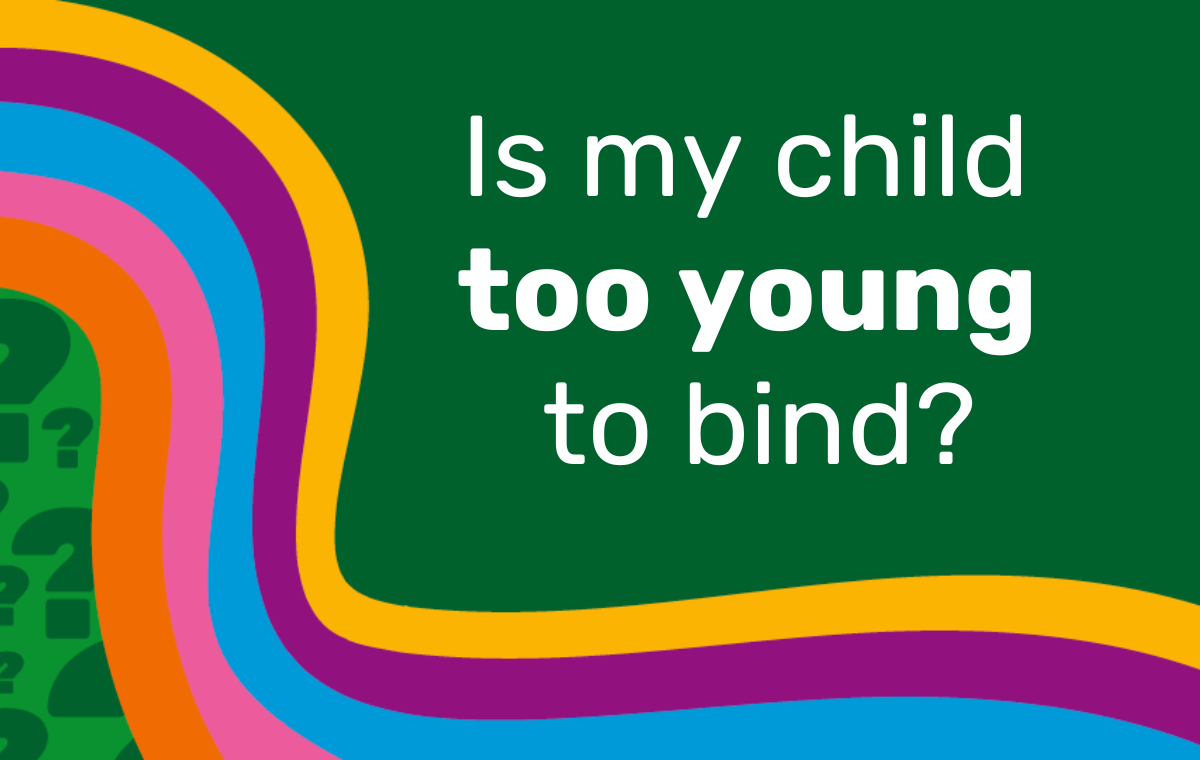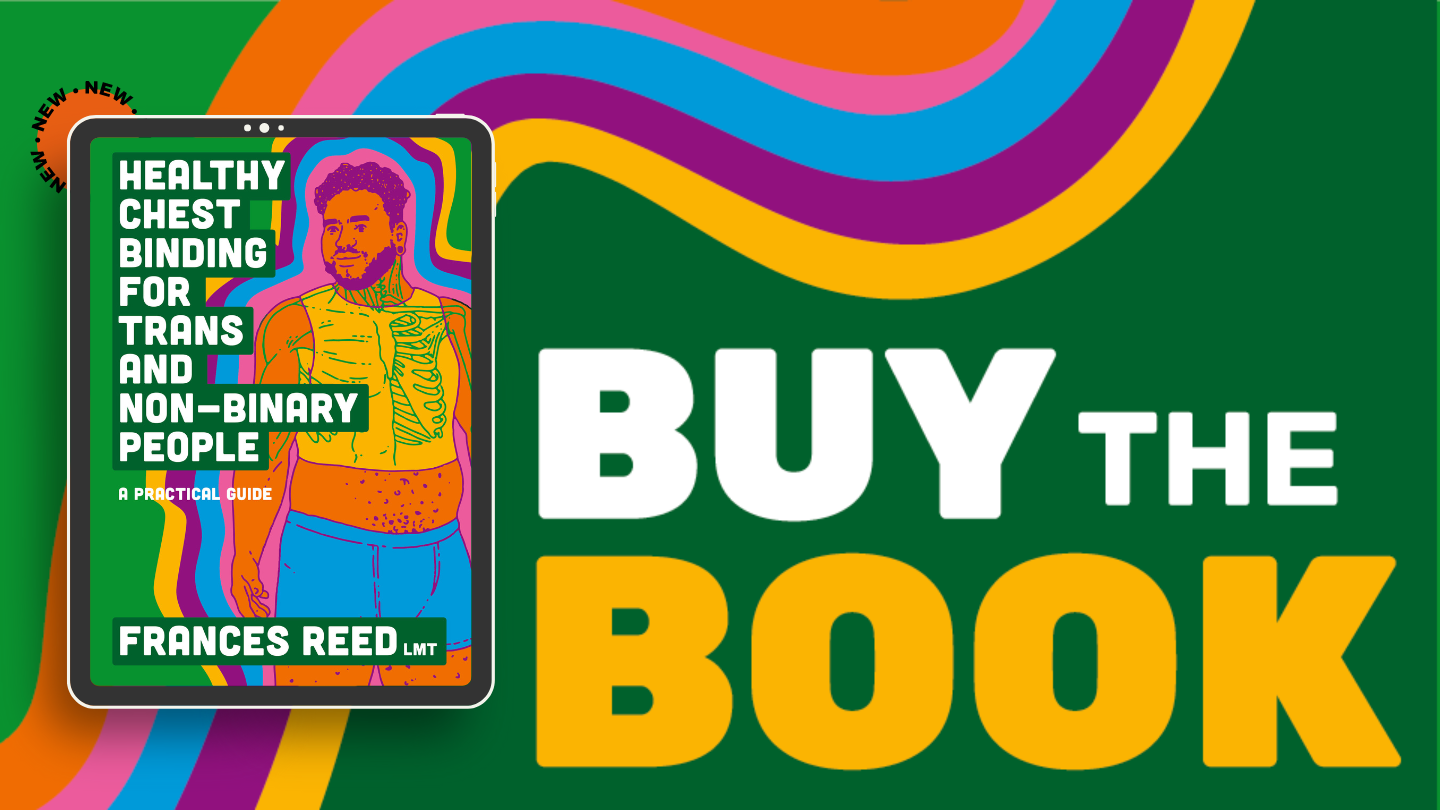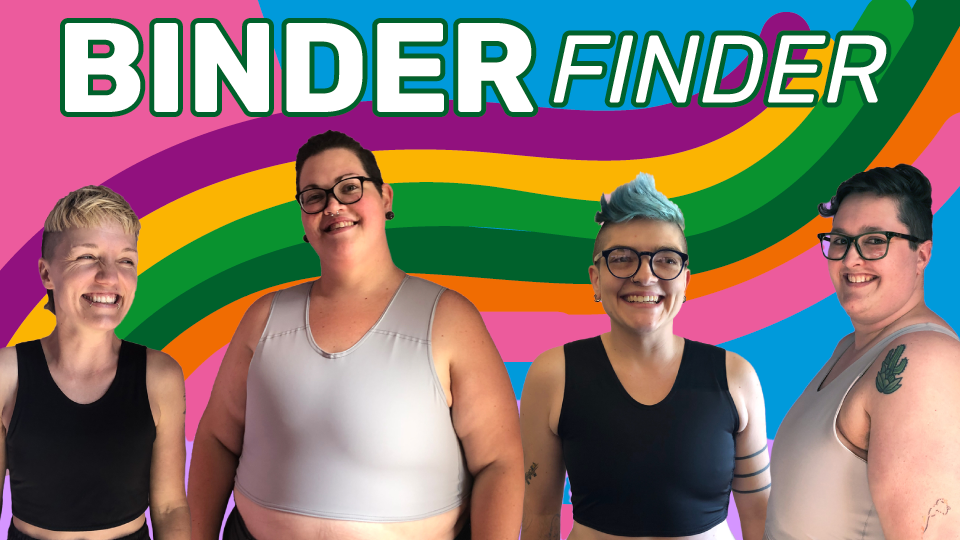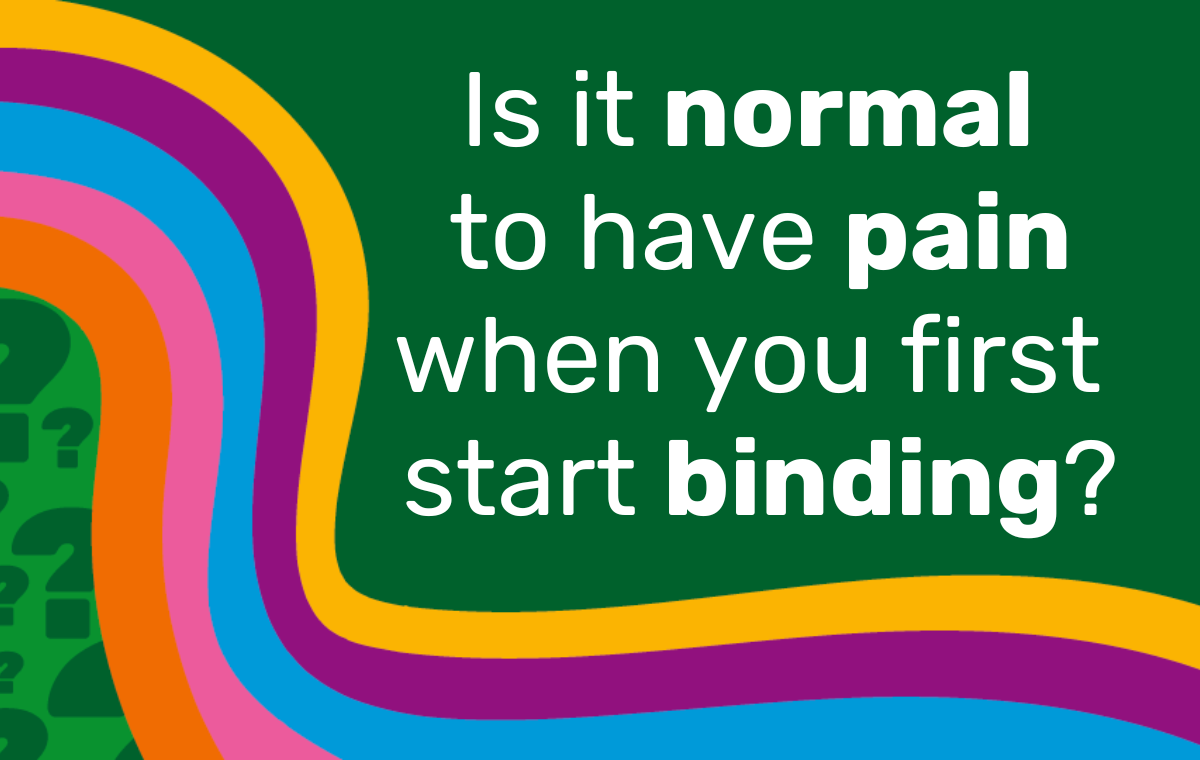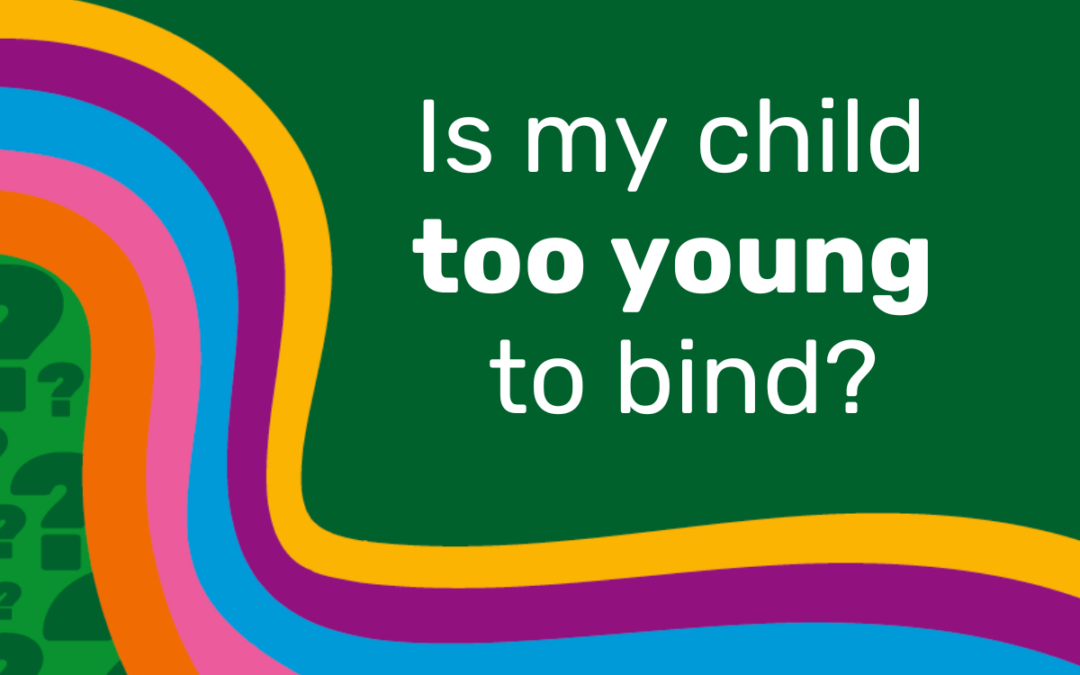
Ask The Binding Coach
Answers to your questions about healthy chest binding and trans health from Frances Reed, author of Healthy Chest Binding for Trans & Non-Binary People.
Is my child too young to bind? When is it safe?
Q: Is my child too young to bind? When is it safe?
There are not yet any longitudinal studies on the impact of chest binding on bodies that are still developing. Until that data exists, I can share best practices and observations from teenage clients in my clinical practice as well as some general information for you to make the best decision.
Since people grow and develop at different rates during puberty there is no specific age that binding becomes safe. I recommend that a person of any age wear the least amount of compression to get results which support their gender expression.
Early in a person’s chest development when chest tissue is smaller, a compression shirt or sports bra might be sufficient compression. This will not damage their muscle and bone development and is common among cisgender girls in early puberty.
As their chest has become larger and they need more compression, many young people begin wearing sports bras which are one or more sizes too small. These overly-tight sports bras can do more damage to the ribcage than binders (read more here- link to “are sports bras safer? LINK). At this point, I recommend moving to a properly-sized binder from a reputable company.
Binders come in a range of compression levels and as they are developing more chest tissue they may graduate through low, moderate, and heavy compression.
Kinetic tape method of binding is an excellent option for developing bodies if you are concerned that you don’t have enough information to make an informed decision for your child. Check out Transtape.info for excellent explanations and tutorials about using kinetic tape.
Hypermobility joint disorders are being diagnosed with greater frequency in young people. These conditions impact collagen production so compression can cause shifting of the positions of bones in the torso (particularly ribcage and collarbones). Low compression options or kinetic tape are advised for people with HJD and you should consult with your child’s doctor to make a plan that relieves their dysphoria without causing lasting damage.
Find the right binder
Research which companies might be best for your child’s level of development with our Binder Finder tool which catalogs 52 characteristics of binders and reputable companies that sell each style.
Frances Reed, The Binding Coach
About The Binding Coach
I’m Frances Reed (they/them). I’m the author of Healthy Chest Binding for Trans & Non-Binary People: A Practical Guide, and the creator of HealthyBinding.com.
I’ve been a licensed massage therapist since 2011, and I support people at all stages of gender transition. I’m here to answer your questions about binding, no matter how big, small, silly, or serious.
Frequent topics include healthy chest binding, finding or wearing a chest binder, self-massage for people who bind, self-care for trans folks, or other topics on trans health.
More Healthy Binding Resources
Buy The Book
The book Healthy Chest Binding for Trans and Non-Binary People: A Practical Guide contains best practices for binding and 23 exercises that you can do on your own to reduce and prevent pain.
Find The Perfect Binder
Our Binder Finder search tool helps trans and non-binary people discover the ideal chest binder to fit their unique body and budget. Explore diverse styles, prioritize safety, and express your authentic self with this essential search tool.
Join our newsletter
Healthy Binding Email List
Be the first to know when we schedule a new workshop or course, create a new healthy binding resource, or when we add new content to our site.
We'll never share your information, that's a promise.

